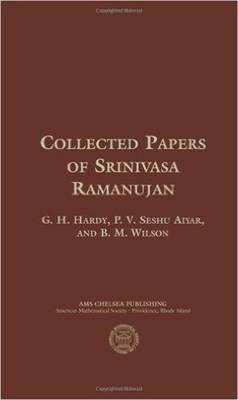About Collected Papers of Srinivasa Ramanujan
Srinivasa Ramanujan was an Indian mathematician who made significant contributions to a number of fields, including number theory, algebra, analysis, and combinatorics. He was born in Erode, Tamil Nadu, into a poor Brahmin family. His mother was a housewife, and his father worked as a clerk in a sari shop. Despite his family’s poverty, Ramanujan was a bright child and showed an early interest in mathematics.Ramanujan attended a local school, where he excelled in his studies. He later attended the Government College in Kumbakonam, where he studied mathematics and won a scholarship to the University of Madras. Ramanujan continued to perform well at the University of Madras, and after graduating in 1909, he began working on his own research.Ramanujan’s work was brought to the attention of the English mathematician G. H. Hardy, who invited him to come to England to work at the University of Cambridge. Ramanujan made the journey in 1914, and he and Hardy quickly established a close working relationship. Hardy recognized Ramanujan’s genius and encouraged him to work on his research full-time.Ramanujan’s work on number theory, algebra, and analysis led to a number of important results, including the Ramanujan prime and the Ramanujan theta function. He also made significant contributions to the theory of partitions, and his work on the partition function has been called one of the most beautiful results in mathematics.”Ramanujan’s health began to decline in 1917, and he returned to India in 1919. He died in 1920, at the age of 32, from what is believed to have been liver cancer.Ramanujan’s work has had a lasting impact on mathematics, and he is considered to be one of the most brilliant mathematicians of all time.”

